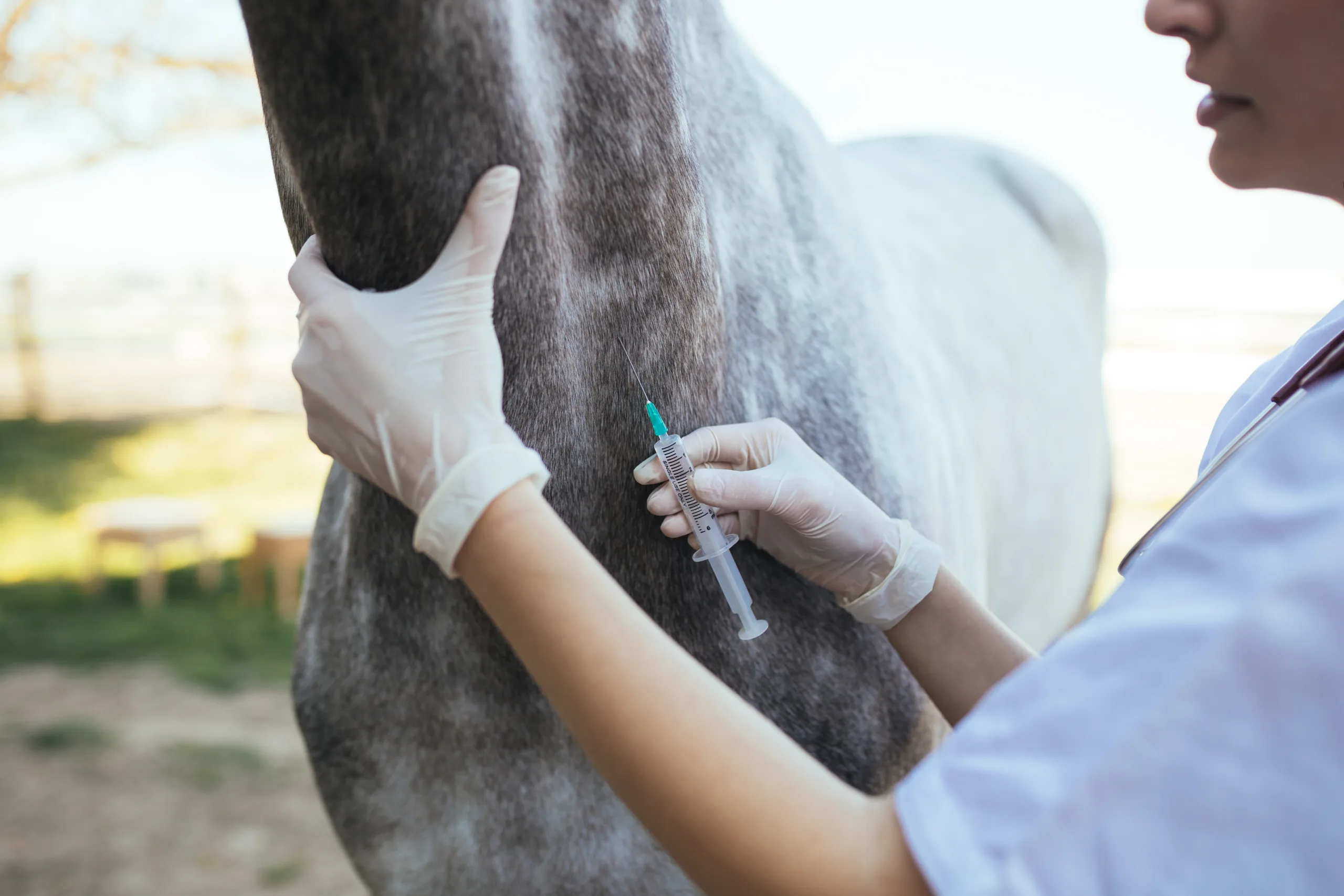In the British system, veterinary pre-purchase examinations are classified into two types: the Limited Pre-Purchase Examination and the Five-Stage Pre-Purchase Examination.
The Limited Pre-Purchase Examination

As the name suggests, this is a restricted vetting, incorporating only two of the five possible stages. It is cheaper than the full five-stage vetting, but the horse is not subjected to a thorough clinical examination.
Before starting: The horse should have been stabled for at least two hours before the vetting begins and should not have been exercised that day. The horse’s passport must be with the horse, and the horse should have seen the farrier in the last three weeks. The horse should not be on any medication at the time of the vetting.
Stage One – At rest: The vet will assess the horse in his stable, observing behavioural characteristics, temperament, and general management before conducting a thorough examination of the horse. This includes auscultation of the heart and lungs at rest using a stethoscope, examination of the eyes using an ophthalmoscope and careful palpation all over. Afterwards, the horse is led outside and stood up square on a level surface before being examined again. Conformation, foot shape and shoeing details are noted at this stage. The feet are also tested for soreness using hoof testers.
Stage Two – Trot up on a hard, level surface: The horse is walked and trotted in a straight line, in hand. Conformation and movement, as well as any signs of lameness are examined for. Flexion tests are carried out on all four limbs. Following this, the horse will be asked to back up and also turn in tight circles on both reins. The vet may decide to lunge the horse on hard or soft ground to examine for gait changes or evaluate any problems picked up with flexion or the manoeuvres.
The Full or Five-Stage Pre-Purchase Examination

The complete examination incorporates the first two stages, from the limited vetting stage, before progressing to the latter three stages.
Stage Three – Strenuous exercise: In this part of the exam, the horse undertakes strenuous exercise. Generally, the exercise should be of an intensity that makes the horse sweat and sends his heart rate up to 120 beats/minute. This should ideally be ridden exercise, to assess behaviour under saddle and the different gaits. However, if, for whatever reason, this is not possible, then the horse can be lunged instead. Respiratory noise during exercise and on recovery is checked along with the heart for any abnormalities.
Stage Four – Rest: This is a rest period back in the stable, usually for 20-30 minutes. It is to allow the horse to recover fully and cool down after the exercise. Standing allows the horse’s recovery time to be assessed, and could show up any signs of stiffness or tying up after work.
Stage Five – Final walk and trot up: This involves a repeat walk and trot up in hand, with possible repetition of the flexion tests. The vet may also decide to lunge the horse again on both reins. This last part ensures that exercise and the following rest period have not revealed any signs of lameness or stiffness.

Extra tests
Blood is routinely collected from horses in the UK at pre-purchase examinations. This blood sample is sent to a central laboratory, where it is held for up to six months. If any lameness or behavioural issues arise in these six months, the purchaser can ask to have the blood tested for substances like painkillers and sedatives.
X-rays may be recommended for vettings of high-level performance horses, and if a noise is heard upon exercise, further evaluation of the upper airway by endoscopy may be advised. [end box]
Final thoughts
A pre-purchase exam is a crucial step in the horse-buying process. It provides peace of mind and helps ensure that the horse you choose is a good fit for your needs and expectations. By investing in a thorough veterinary evaluation, you can avoid unpleasant surprises and set the stage for a rewarding partnership with your new equine companion.

